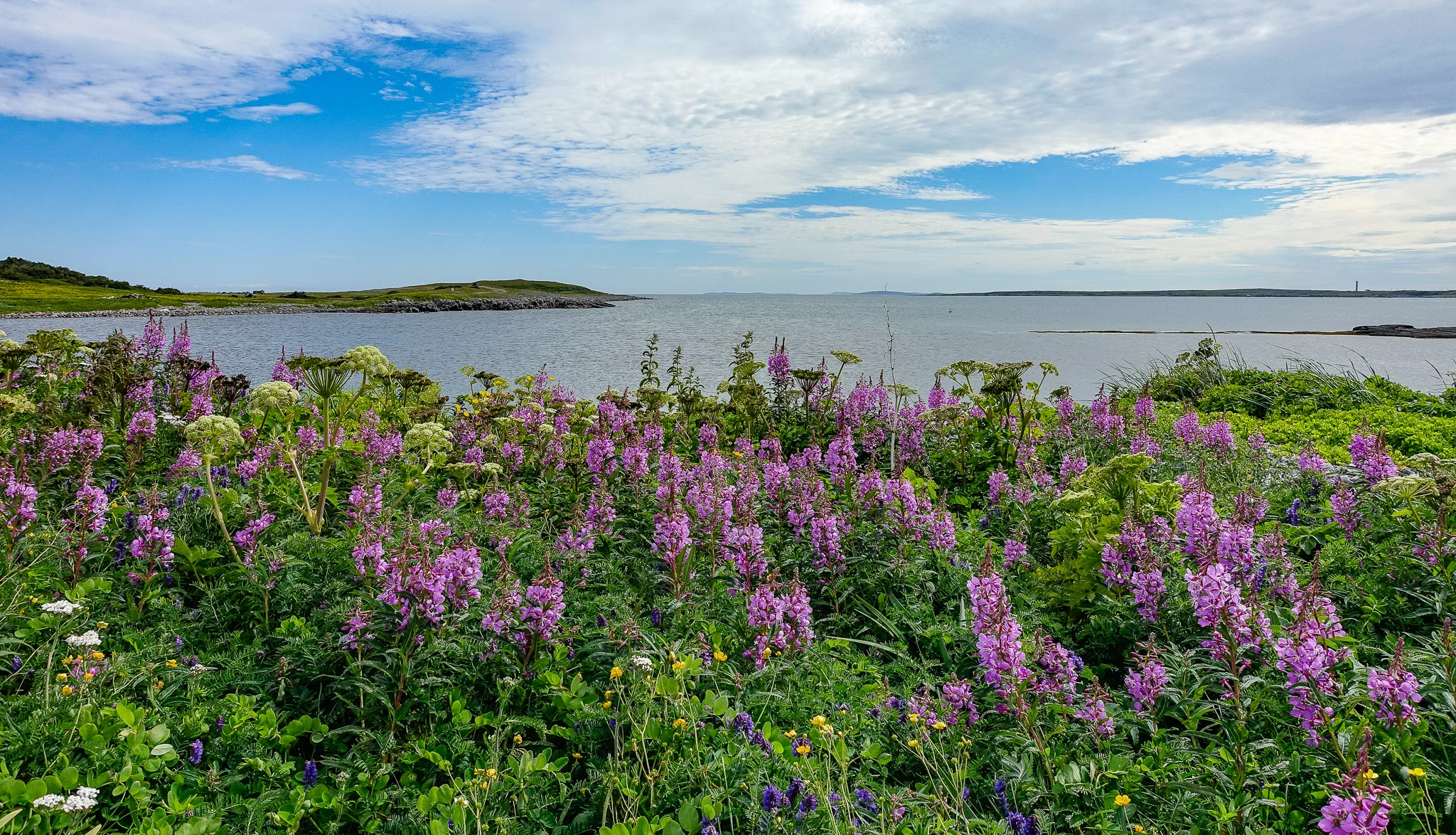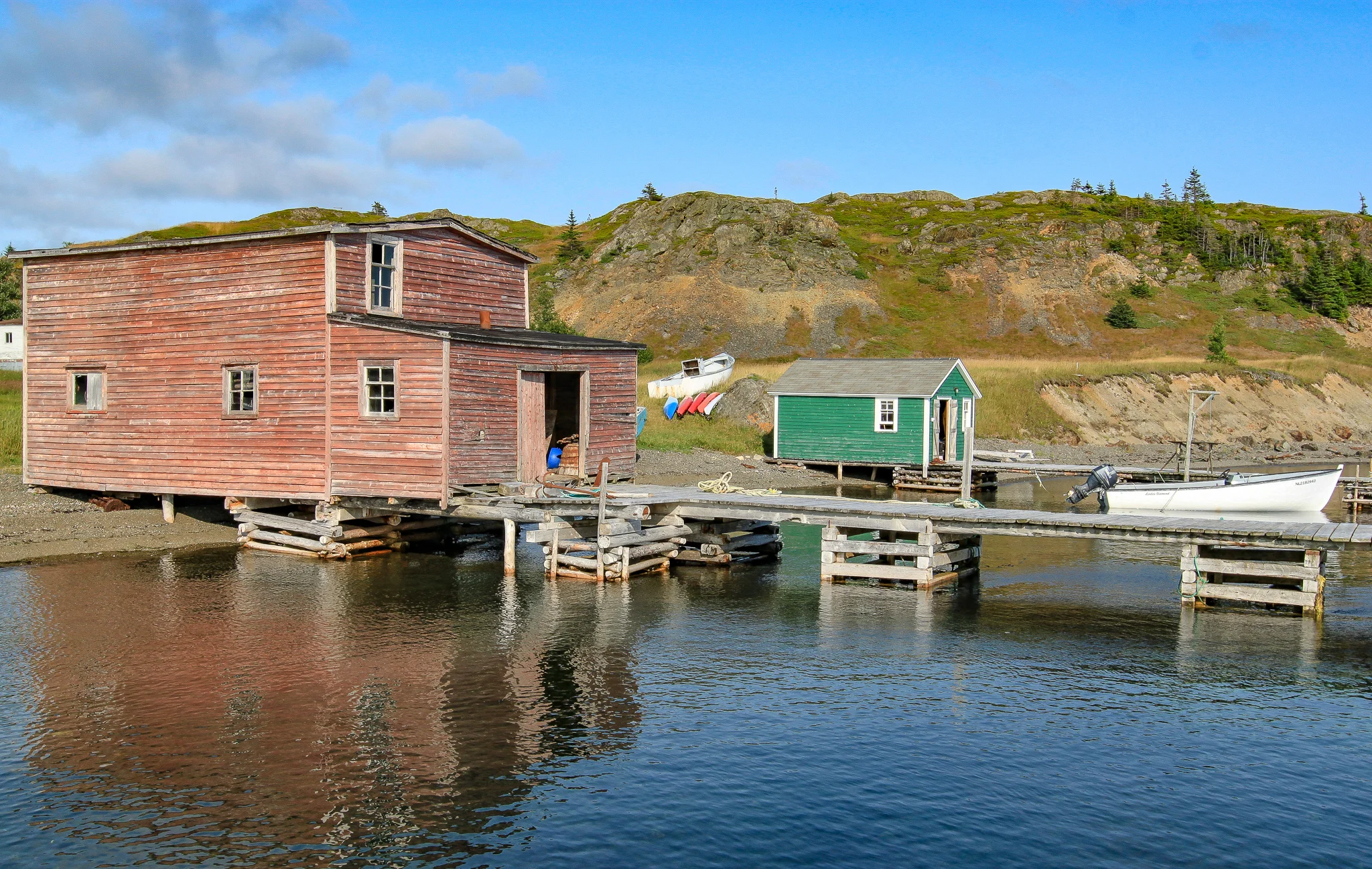IMAGES OF A NEWFOUNDLAND ROAD TRIP
VIKING DAWN
It’s a touch ironic how the Canadians are such amiable people when one considers that amongst the first European settlers to arrive in the country were the descendants of a mass-murderer from Reykjavik.
As penance for slaughtering Eyiolf the Foul (including impaling several members from the Thorngest clan) Erik the Red was banished from his homeland for a period of no less than three years. Not one to bide his time on a distant rocky outcrop, this most volatile of vikings loaded his boat with a grizzly crew, several sacks of horned skulls, swords that flashed in the midnight sun and enough mammen axes to fell a forest. Crouched on the prow of his boat, eyes screwed against a westerly gale, Erik set sail for a new and mysterious land worthy of pillage. By around 950 AD, he arrived on the shores of a vast continent of snow and ice.
Leaping ashore, Eric proclaimed, “Men will desire much the more to go there if the land has a good name.’ Not willing to allow a few minor details to derail his vision of paradise, Erik named this new country Greenland, when in reality Whiteland might have been closer to the truth.
THE INTERIOR OF A RECONSTRUCTED VIKING DWELLING. L’ANSE AUX MEADOWS.
THE EXTERIOR OF A RECONSTRUCTED VIKING DWELLING. L’ANSE AUX MEADOWS.
It was Leif Erikksson, Eric the Red’s son who, a few years later, ventured north along the coast of Greenland and crossed the Davis Strait. Skirting icebergs, polar bears and glacial storms, he wound up on the northern shores of what is today Newfoundland. Much like his father before him, it appears Leif had an eye for the main chance: it’s said he named this new land Vinland (wineland), even though there wasn’t a vine to be had within a thousand kilometres! But that was to miss the significance of the event. It was one hundred thousand years earlier that man first ventured beyond the African continent, striving northwards and eastwards, crossing Asia and the Barents Straits and into the Americas. When Leif landed on the shores of North America he came face to face with the indigenous Indians and thereby completed mans circle around the world.
Our ferry passage to Porte aux Basque, Newfoundland, was undoubtedly a less dramatic affair than Eric the Red’s voyage there from Greenland. Icy seas, pillage and the thrust of a halberd’s blade couldn’t have been further from my mind. Indeed, from the ferry’s bar, a glass of rough red wine to hand, we watched Nova Scotia leisurely slip beyond the veil of drizzle. And when it had, we retired to our cabin to enjoy what was left of the six and a half hour journey.
August, the main holiday season on Newfoundland, finds such attractions as the Gros Morne National Park teeming with visitors. Even so, as these photographs testify, it wasn’t so challenging to uncover the peace and harmony we’d gone in search of. The simple pleasures of wandering from cove to cove, grilling freshly-caught halibut, scanning the ocean for whales, foraging for berries, delving into history. Newfoundland brought a close to the final leg of our trans-Americas odyssey. It was a time for reflection. Almost every turn unveiled an ocean view - a reminder of how the journey eastwards beckoned. Returning home. Mission accomplished.
FLOWERS COVE.
CAPE ONION.
SHIP’S COVE.
LIMESTONE BARREN, WILD BIGHT.
COOK’S HARBOUR.
HAY COVE.
TERRA NOVA NP.
TABLELANDS.
TWILLINGATE.
TRINITY EAST.
A ROOT CELLAR. ELLISTON.
TRINITY.
FORAGING FOR BLUEBERRIES, GUNN HILL, TRINITY.
ELLISTON.
CAPE BONAVISTA.
THE CAPE BONAVISTA FOX.
BONAVISTA.
BONAVENTURE.
ELLISTON.
THE SEAT OF CONTEMPLATION. ELLISTON.
ST JOHN’S.
ST JOHN’S.
ST JOHN’S.
CLARKE’S BEACH.
ROUTE 80 FROM OLD PERLICAN TO GRATES COVE.
GRATES COVE.
CAPE RACE.
FOSSIL BEDS, CAPE RACE.
GANNET COLONY, CAPE ST MARY.
A GANNET IN FLIGHT. CAPE ST MARY.
CAPE ST MARY.



































